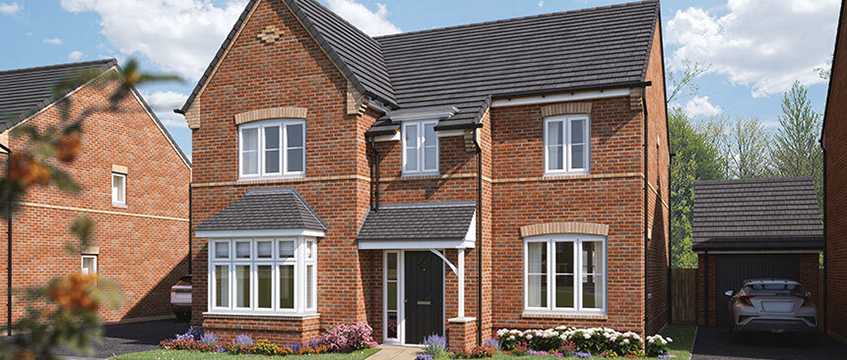Freehold reversionary ground rents are often regarded as rather dull property assets. However, with today’s unprecedented low inflation and interest rates, what were considered as modest but secure returns on freeholds with shorter leases and reversionary potential have now become more interesting prospects.
In the past few years, institutional funds have been active investors in the non-reversionary ground rent market, resulting in rapidly rising prices for larger ground rent assets with periodic linked reviews.
What is more, the way that freeholds with ground rents have been valued has changed. Traditionally, freehold values were based simply on a rule of thumb multiple of 10 times the ground rent. Now, there is a much more sophisticated approach, encompassing the period of time to the next review, the ground rent and opportunities for additional income through management services.
According to the Department for Communities and Local Government, one in five private homes in England – some 4m properties – are leasehold. Ground rents were traditionally associated with flats – converted Victorian and Edwardian houses, apartment blocks built in the 1970s and 1980s and new-build apartments were the staples of the market. However, an increasing number of new-build houses are now leasehold too. In 1996, just 22% of new-build homes were leasehold, but by 2015 this figure had risen to 43%.
This has been controversial because, while many of these ground rents rise in line with inflation, some developers have inserted onerous lease clauses with excessive ground rent increases.
Putting the recent ground rents controversy aside, there has been a tendency to overlook shorter unexpired leases. Lot sizes are typically small – out of nearly 700 lots offered by UK auctioneers with leases subject to unexpired terms of less than 99 years between 2013 and 2016, the average lot size was around £40,000.
In view of this, reversionary ground rents are not as attractive to large-scale investors and are not suited to private treaty sales. The auction market is seen as the best option for these assets and, with the market performing well, they are experiencing a renaissance in the auction room.
What is behind this trend? Firstly, 90 is the new 80 – in other words, the definition of what is considered reversionary by the market has changed from an unexpired lease of 80 years to one of 90 years. With unexpired leases of between 80 to 90 years, the premium from lease extension becomes a more important factor in the pricing compared to the diminishing influence of the ground rent income multiplier.
This shift in the perception of reversionary ground rents is the result of several factors:
■ The new leases for apartments and, in some cases houses, created by developers are typically 125 years or more, with leases of 99 years being very rare. The value of these investment vehicles lie in ground rent of £250-plus and increases through reviews rather than lease extension. It will take time for these leases to expire sufficiently to become reversionary.
■ Reversionary ground rents are seen as offering better value for money for smaller investors and the price point for reversionary ground rents is relatively low compared with other property investment alternatives.
■ Freehold residential assets under £40,000 don’t attract stamp duty, making this form of investment tax efficient for a wide range of buyers.
■ There is increasing pressure on leaseholders to extend leases with higher unexpired terms, partly owing to tighter lending rules. Furthermore, with lenders providing longer-term loans, lease length becomes more of an issue as lenders look to protect their interest.
■ Under the 1993 Leasehold Reform and Urban Development Act, even though the “marriage value” applies for lease extensions on leases with unexpired terms of less than 80 years, for any lease extended the tenant must compensate the landlord for the right to receive the property back at the end of the lease.
The statutory calculation is typically between 5% and 6%. This means that in practice the inherent reversionary value of the asset increases between 5% and 6% year in, year out. This is assuming static house prices, so with any house price growth, this effect is amplified.
Given the current economic climate, the focus on the reversionary ground rent market is expected to sharpen, as leaseholders seek to boost the value of their assets, facilitate a house move or secure lending by extending leases. This is particularly true for leases with 80 to 90 years unexpired. As such assets become increasingly rare, now is a good time for owners to assess their portfolios and consider their investment strategy.
Freehold ground rents sold at Allsop’s March sale
Lot 80: freehold ground rent investment secured upon a purpose-built block of 24 flats in Auckley, close to Doncaster, South Yorkshire
Guide: £150,000+
Sold: £186,000
Years’ purchase: 27.5
Lot 123: freehold ground rent secured on a mid-terrace building comprising a commercial unit and 12 flats in Deptford, SE8
Guide: £40,000+
Sold: £85,000
Years’ purchase: 28
Lot 135: freehold parcel of ground rents secured on 30 flats and rent charge on 16 houses, Upper Norwood, SE19
Guide: £10,000+
Sold: £35,000
Years’ purchase: 48
Years’ purchase equals the number of years it would take for the annual income to pay back the equivalent of the purchase price.
Richard Watson is a partner at Allsop Residential Auctions










